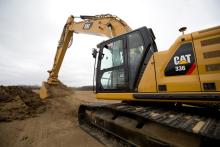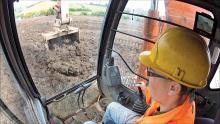
ISO certified excavator ROPS cabs are coming for excavators. Mark Cherrington reports
It's been a long time coming, but certified ROPS cabs on excavators are a reality following the recent release of a standard,
In addition, an update to the EU's Machinery Safety Directive (MSD), 2006/42/EC, which took effect at the end of 2009, brought in a number of changes, including a requirement for crawler excavators in the 10 to 50tonne range to provide added operator protection in the event of a machine rollover. While this does not specifically require the use of the new ISO standard, at least one manufacturer,
For many years, excavators - unlike most other items of earthmoving and construction equipment - have been exempted from the requirement to have a ROPS (roll over protection structure). There are a number of reasons why this has been the case.
To begin with, the structural design of an excavator has made it quite a challenge to develop a strong enough 'platform' on which to mount a ROPS, and which is able to withstand the forces on a cab and its supporting platform in the event of a rollover. An excavator is not like a dozer or truck, where the cabin sits on the main body of the machine, and simply has to be robust enough to withstand the weight of the machine if it rolls over.
On an excavator, the 'platform' in the front left-hand corner of the machine where the cab is mounted has to be able to support the entire weight of the machine, as well as provide structural integrity to the ROPS so that the operator is protected. Over the years, excavator manufacturers have carried out a lot of R&D work to come up with a platform and cabin structure that can meet the high safety requirements of a ROPS standard.
Other reasons for a lack of an excavator ROPS standard probably include long-standing industry attitudes. For many years, it was felt that due to the nature of their work, and their limited load-and-carry duties, excavators were at fairly limited risk of roll over.
However, with excavators increasingly used on steep sites and rough terrain, and with an ever-growing range of attachments, the risks of rollover have been increasing; the latest advances in design and materials technology have meant development of an excavator ROPS standard was now feasible. At least three excavator manufacturers - Caterpillar,








